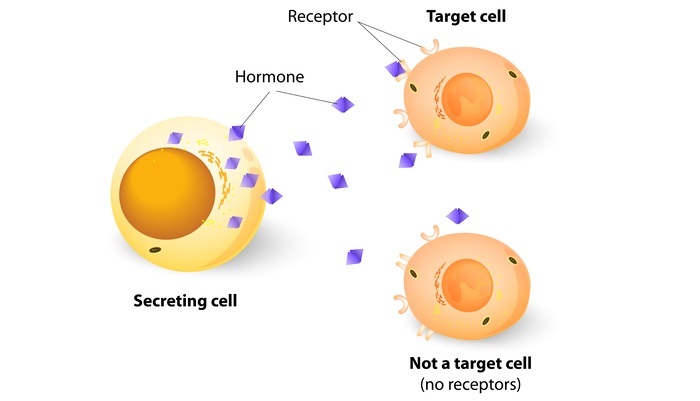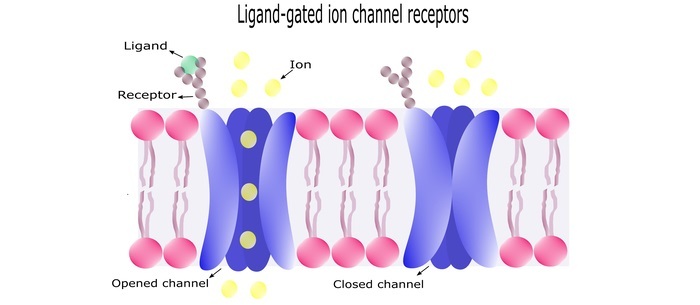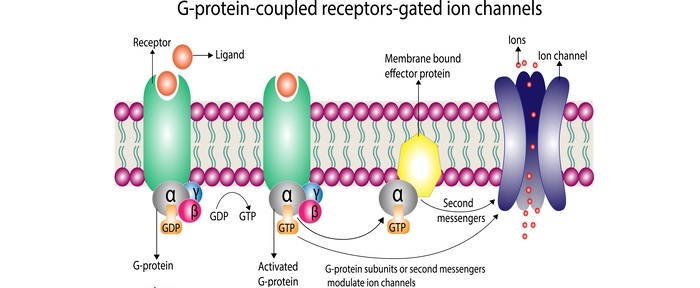
 Data Structure
Data Structure Networking
Networking RDBMS
RDBMS Operating System
Operating System Java
Java MS Excel
MS Excel iOS
iOS HTML
HTML CSS
CSS Android
Android Python
Python C Programming
C Programming C++
C++ C#
C# MongoDB
MongoDB MySQL
MySQL Javascript
Javascript PHP
PHP
- Selected Reading
- UPSC IAS Exams Notes
- Developer's Best Practices
- Questions and Answers
- Effective Resume Writing
- HR Interview Questions
- Computer Glossary
- Who is Who
Cell Surface Receptors and Related Functions
Introduction
The cell surface is the outermost layer of the cell that interacts with the external environment. It is a dynamic and complex structure composed of various biomolecules, including lipids, proteins, and carbohydrates.
The cell surface plays a crucial role in communication between cells and their environment, and this communication is mediated by cell surface receptors. Cell surface receptors are transmembrane proteins that bind to specific molecules in the extracellular environment and transmit signals to the intracellular environment to elicit cellular responses.

In this tutorial, we will explore the different types of cell surface receptors, their functions, and the mechanisms of signal transduction. We will also discuss the importance of cell surface receptors in various physiological processes, including development, immune response, and cell growth.
Types of Cell Surface Receptors
There are several types of cell surface receptors, each with unique structures and functions. The three primary types of cell surface receptors are -
Ion-channel-linked receptors,
G-protein-coupled receptors (GPCRs), and
Enzyme-linked receptors.

Ion-Channel-Linked Receptors
Ion-channel-linked receptors are integral membrane proteins that form a pore through the cell membrane, allowing the passage of ions across the membrane.
These receptors are involved in the transmission of signals in the nervous system and are responsible for the sensation of pain, touch, taste, and smell.
The binding of a ligand to the receptor causes a conformational change that opens or closes the ion channel, allowing ions to flow into or out of the cell.
-
This flow of ions generates an electrical signal that is transmitted along the nerve cell.
Examples of ion-channel-linked receptors include nicotinic acetylcholine receptors, gamma-aminobutyric acid (GABA) receptors, and glutamate receptors.
G-Protein-Coupled Receptors (GPCRs)
GPCRs are the largest family of cell surface receptors and are involved in the regulation of a wide range of physiological processes, including vision, taste, smell, and hormone signaling.
GPCRs are seven-transmembrane-domain proteins that span the cell membrane and have an extracellular N-terminus and an intracellular C-terminus.
The binding of a ligand to the receptor causes a conformational change that activates a G-protein on the intracellular side of the receptor.
-
The G-protein then activates an effector protein, such as an enzyme or ion channel, leading to the production of a second messenger, such as cyclic adenosine monophosphate (cAMP) or inositol trisphosphate (IP3). The second messenger then elicits a cellular response.
Examples of GPCRs include beta-adrenergic receptors, serotonin receptors, and dopamine receptors.

Enzyme-Linked Receptors
Enzyme-linked receptors are transmembrane proteins that have an extracellular ligand-binding domain and an intracellular domain with enzymatic activity.
These receptors are involved in the regulation of various cellular processes, including growth, differentiation, and immune response.
The binding of a ligand to the receptor activates the intracellular enzymatic activity, leading to the production of a second messenger, such as cyclic guanosine monophosphate (cGMP) or cyclic adenosine diphosphate ribose (cADPR).
-
The second messenger then elicits a cellular response.
Examples of enzyme-linked receptors include receptor tyrosine kinases, cytokine receptors, and guanylyl cyclase receptors.
Functions of Cell Surface Receptors
Cell surface receptors are essential for the proper functioning of cells and organisms.
They play a critical role in various physiological processes, including development, immune response, and cell growth.
Development
-
During development, cell surface receptors play a crucial role in cell-cell communication and signaling pathways that regulate cell differentiation, migration, and proliferation.
For example, the receptor tyrosine kinase (RTK) family of receptors plays a crucial role in the development of various organs, including the nervous system, the heart, and the lungs.
Immune Response
Cell surface receptors are also essential in the immune response.
-
The immune system relies on the recognition of foreign antigens by cell surface receptors to mount an appropriate response.
For example, the T-cell receptor (TCR) recognizes antigens presented on the surface of antigen-presenting cells (APCs), leading to the activation of T-cells and the production of cytokines that orchestrate the immune response.
Cell Growth and Proliferation
-
Cell surface receptors are also involved in regulating cell growth and proliferation.
For example, the epidermal growth factor receptor (EGFR) and the insulin receptor (INSR) are both receptor tyrosine kinases that play a crucial role in the regulation of cell growth and proliferation.
Dysregulation of these receptors can lead to the development of cancer.
Mechanisms of Signal Transduction
The binding of a ligand to a cell surface receptor initiates a cascade of events that leads to a cellular response.
The specific mechanism of signal transduction depends on the type of receptor involved.
Ion-Channel-Linked Receptors
The binding of a ligand to an ion-channel-linked receptor causes a conformational change that opens or closes the ion channel, allowing ions to flow into or out of the cell.
This flow of ions generates an electrical signal that is transmitted along the nerve cell.
G-Protein-Coupled Receptors (GPCRs)
The binding of a ligand to a GPCR causes a conformational change that activates a G-protein on the intracellular side of the receptor. The G-protein then activates an effector protein, such as an enzyme or ion channel, leading to the production of a second messenger, such as cyclic adenosine monophosphate (cAMP) or inositol trisphosphate (IP3). The second messenger then elicits a cellular response.
Enzyme-Linked Receptors
The binding of a ligand to an enzyme-linked receptor activates the intracellular enzymatic activity, leading to the production of a second messenger, such as cyclic guanosine monophosphate (cGMP) or cyclic adenosine diphosphate ribose (cADPR). The second messenger then elicits a cellular response.

